Richard Teschner (1879 – 1948), a graphic designer, artist and artisan in the Wiener Werkstätte (Vienna Workshops), is best known for his puppetry, especially that inspired by Wayang (“shadow”), the classical Javanese puppet drama that uses the shadows thrown by puppets manipulated by rods against a translucent screen lit from behind.
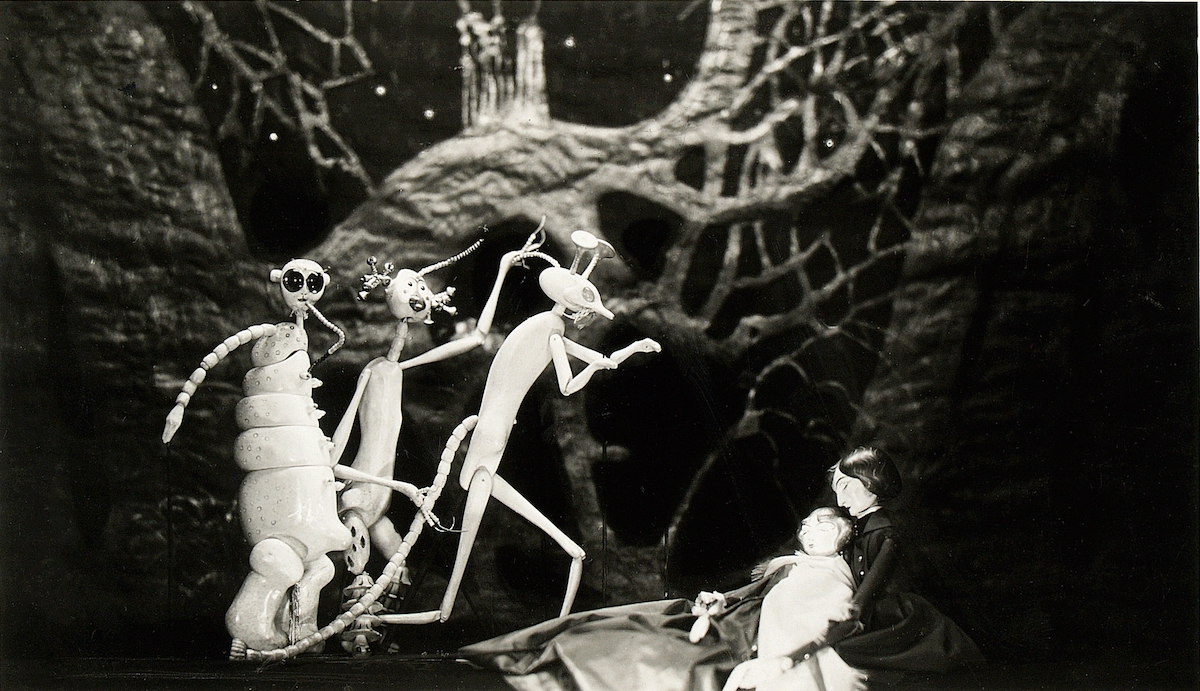
To get a better idea of his skill at producing drama from bits of wood, string and cloth, the still above is from Nachtstücke, or ‘Night Pieces’, a set of four character pieces for piano by the German composer Robert Schumann. The Nachtstücke was written in four parts, inspired by the death of Schumann’s brother, with the last piece descending into cacophony mirroring the composer’s own declining mental health. This scene may be from part 2, The Queer Assembly, or part 3, Night Revelry. Teschner named the monstrous figures that haunt the two somnolent women, calling them from left to right: the meaty one, the listener, and the yellow one.
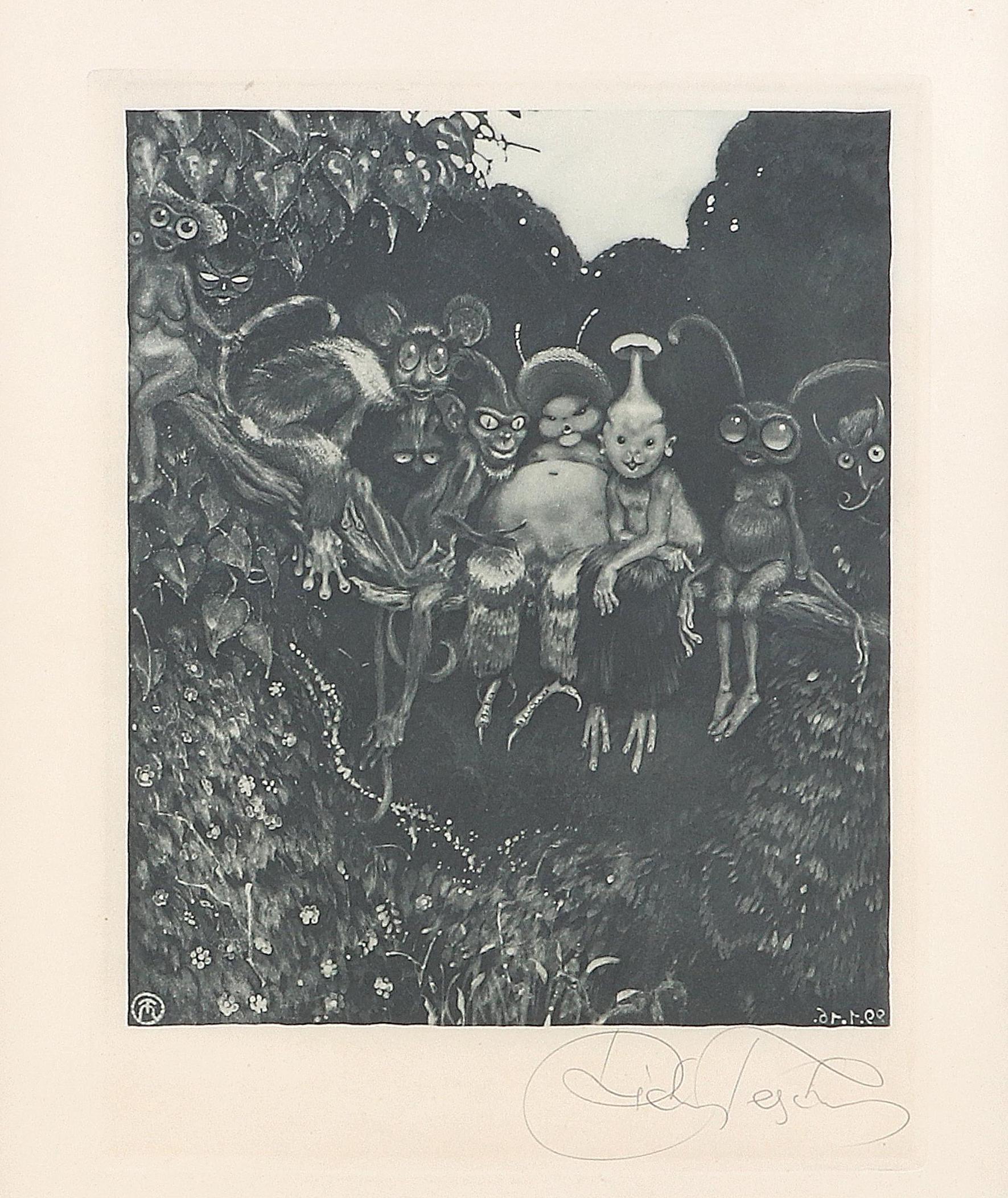
“The Spectators”, 1916, aquatint, signed Richard Teschner
Much like Franz Sedlacek, who painted a world of monsters, magic and something lurking behind closed doors, and the subject of Gustav Meyrink’s bestselling novel Der Golem, creatures in Teschner’s art and his puppets seem to emerge from a shadowy corner of the room.
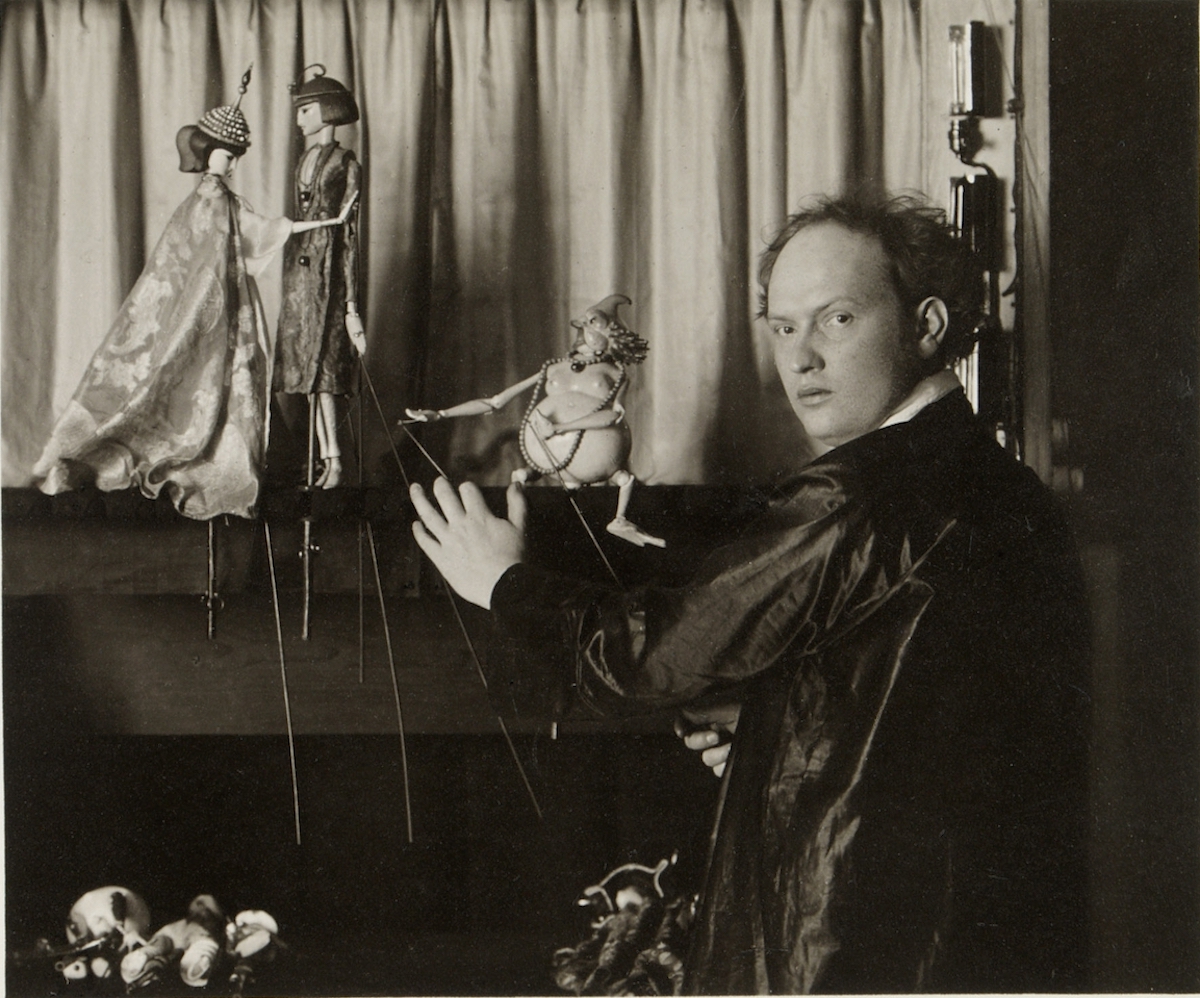
Richard Teschner and his figures
Richard Teschner and His Incredible Puppet Shows
Teschner studied art at Prague’s Academy of Arts in Prague (1896-1899) and Vienna’s School of Applied Arts School of Arts and Crafts (1900). He returned to Prague in 1901, where in 1904 he made the “Entwurf eines Marionettentheaters” (Design for a Marionette Theatre). In 1908, he directed the first performance in German of the play by Maurice Maeterlinck, Pelléas et Mélisande at the city’s German Theatre.
In 1909, Teschner moved to Vienna and became a member of the Wiener Werkstätte (see the shop) and began to create more specatular puppets. Each around 30 to 40 centimetres high, dressed in sarongs made of materials of the Wiener Werkstätte and inspired by Viennese Art Nouveau, his puppets were controlled by rods and internal strings that allowed Teschner manipulate their joints and limbs.

Richard Teschner – Fur Devil 1913
He presented these puppets, starting in 1912, with the “Goldenen Schrein“ (“Golden Shrine”), a small, shrine-like stage. A “Polyphon”, a large musical box with interchangeable metal disks, produced the original music to accompany the puppet performances enacted purely in mime. The first performances were inspired by old Javanese legends such as Kosuomos Opfertod (Kosuomo’s Sacrifice) staged in 1912; Nabi Isa (an Indonesian story about Jesus) in 1912; Nawang Wulan (a Javanese moon-princess deity) in 1912; Prinzessin und Wassermann (The Princess and the Water Spirit), staged in 1913.
These first creations opened the way for more personal productions. The Weihnachtsspiel (Christmas Plays), created in 1916 (around the time when Bauhaus artist Paul Klee was making puppets for his son Felix – see them here), were presented to the public for the first time at the Austrian Museum for Art and Industry in Vienna in 1920.

Figurenspiegel. Die Lebens-Uhr. 1935
In 1932, Teschner presented his Figurenspiegel (Figure Mirror; above) played with concave mirrors framed in gold and decorated with the signs of the Zodiac, which introduced a new concept in the spatial presentation of puppets, thereby rejecting the confined spaces of the traditional puppet stage. The invention of the mirror stage allowed Teschner to experiment with theatrical lighting and cinematic illusion; for example, illuminating individual puppets with spot lights that could then fade in or out to reveal other figures in contrasting proportions.
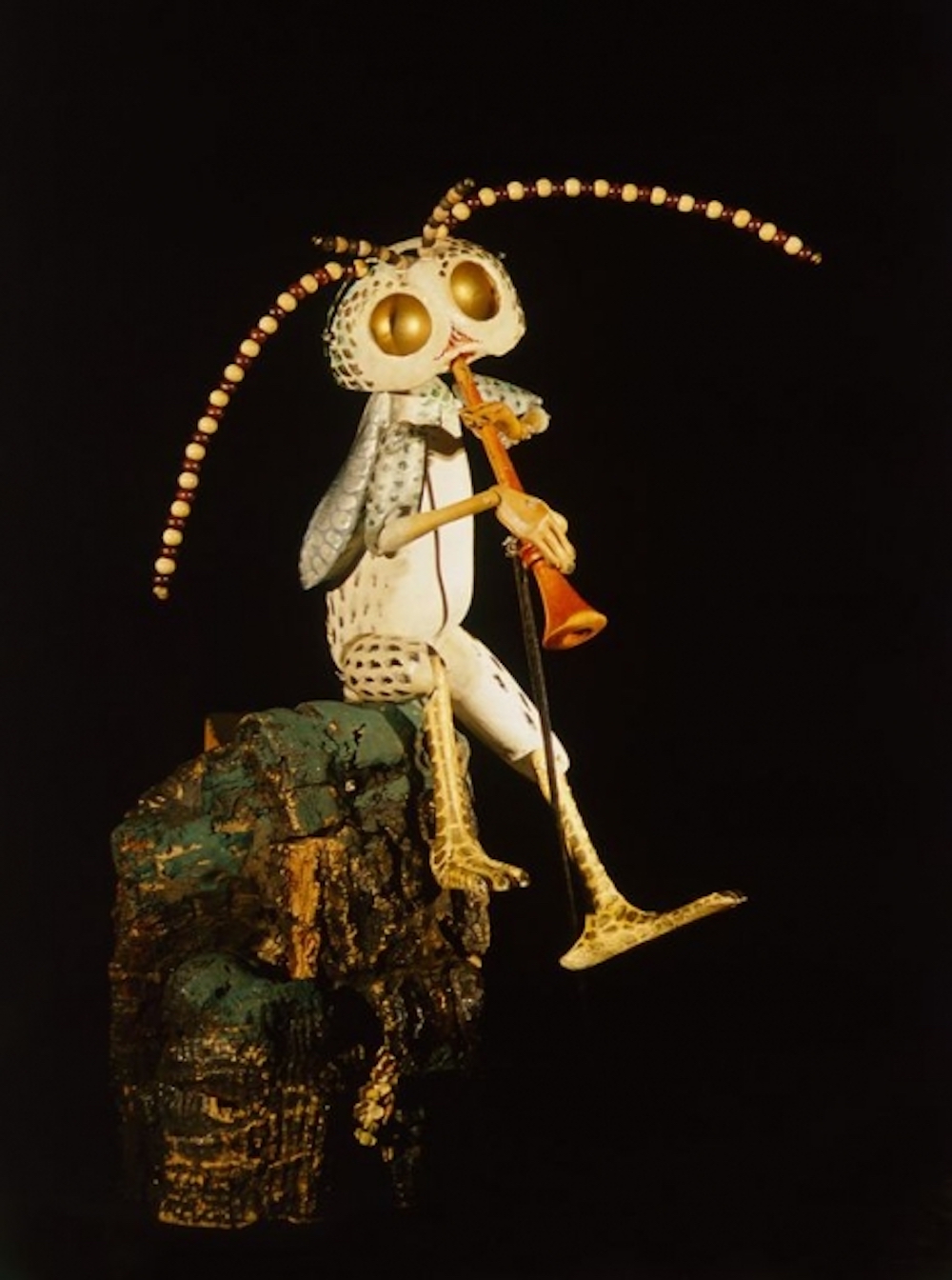
Between 1912 and 1948, Teschner created around one hundred and forty puppet characters. Despite the success of his work, Teschner performed abroad just once: in London in 1934.
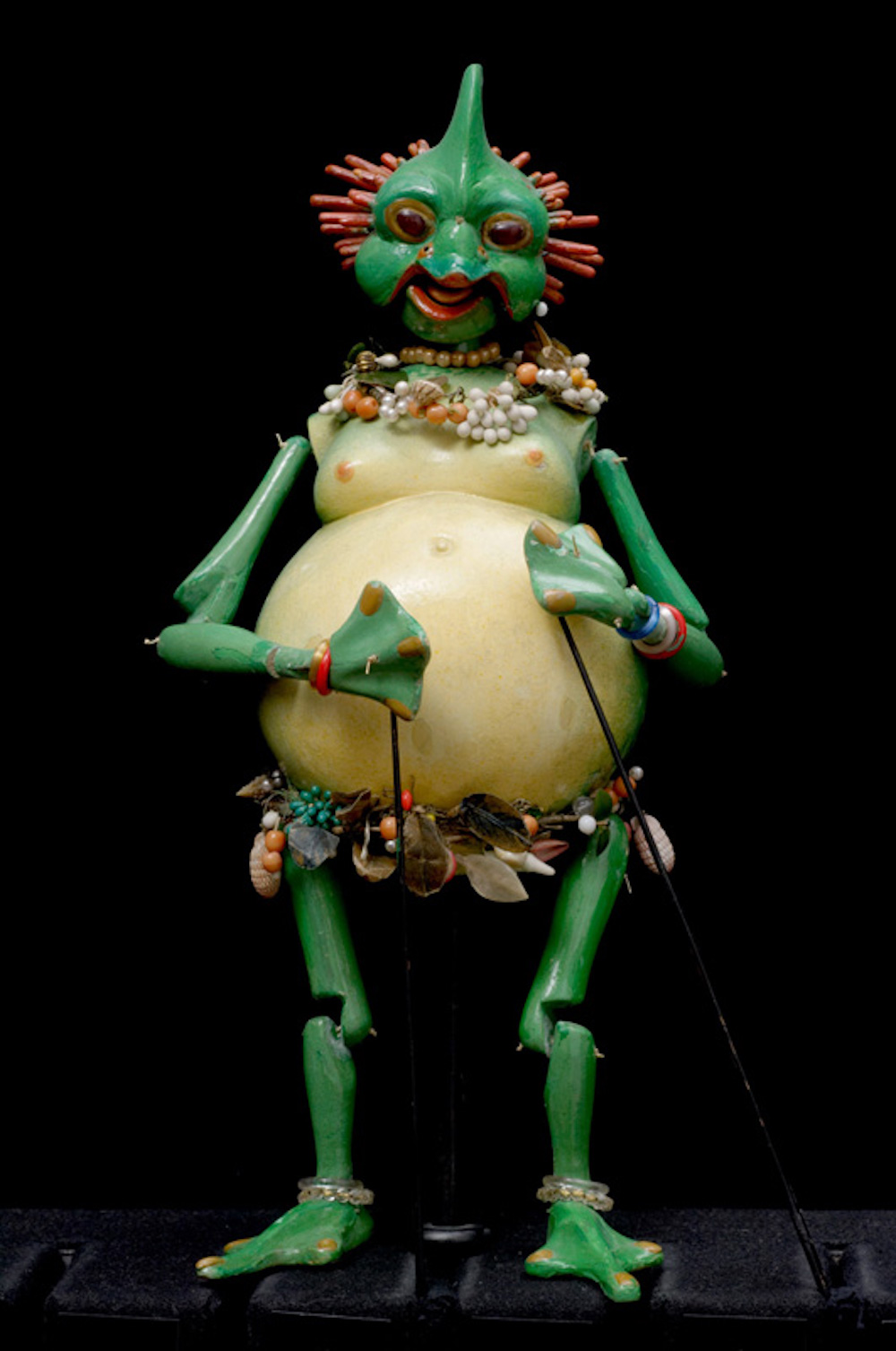
Wassermann from Prinzessin und Wassermann 1913
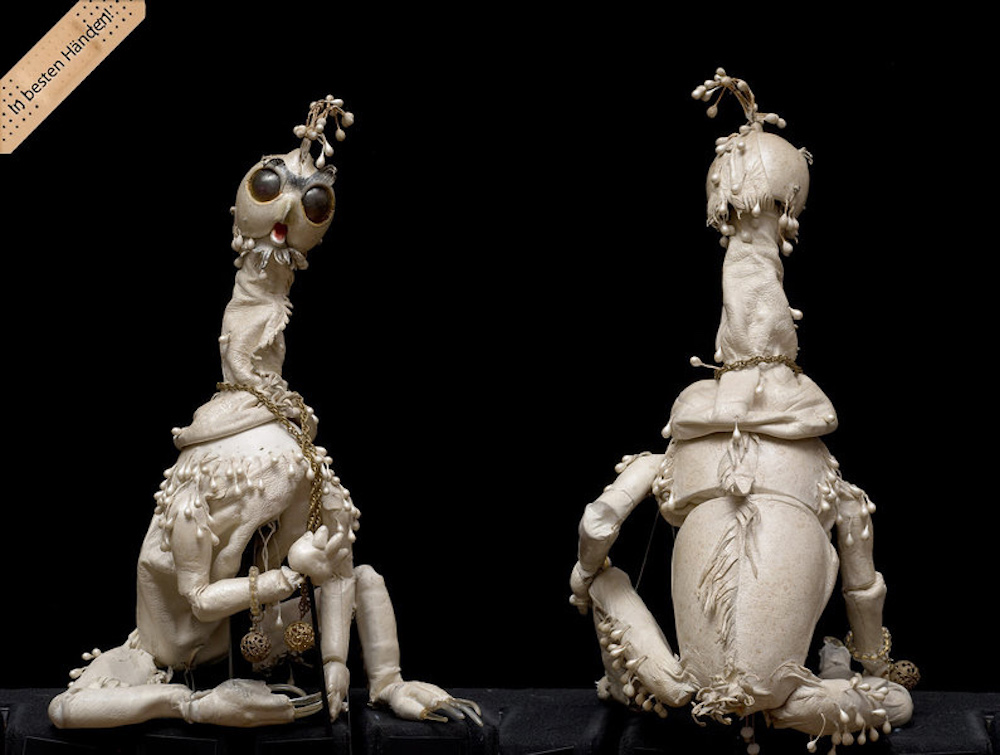
Basilisk from Der Basilisk, 1937
“In techniques for rod-puppets, Richard Teschner (1879–1948) set new standards. Teschner, one of the most notable representatives of Viennese art nouveau, was a man of exceptionally diverse gifts: he was a painter, graphic designer, sculptor, puppeteer and much more. With his revolutionary theatre of figures, he created an integrated theatrical work of art encompassing everything from puppets to plays, stagecraft and incidental music. Using the Javanese rod-puppets as his model, he developed a new, expressive puppet variety for his pantomimic plays. Overcoming the traditional proscenium stage led to the unique round of the Figure Mirror, which gave rise to images of great beauty and suggestive effect.”
– The Theater Museum, Vienna, Austria

Bologneser Hündchen 1929
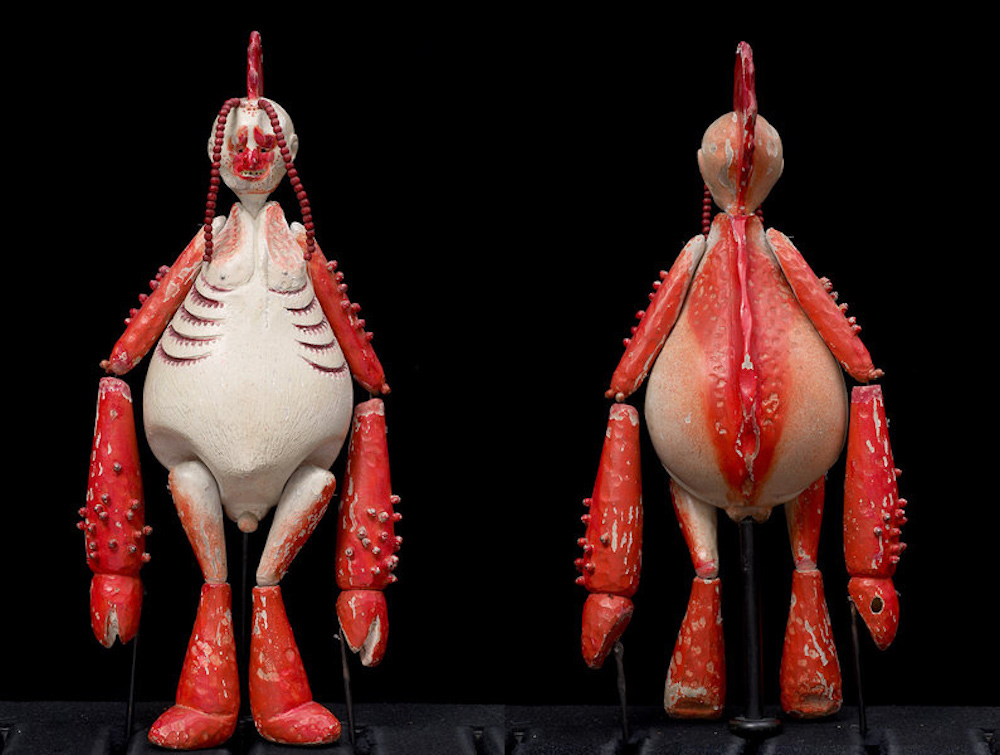
Richard Teschner puppet Der Rote aus Nachtstück, 1913
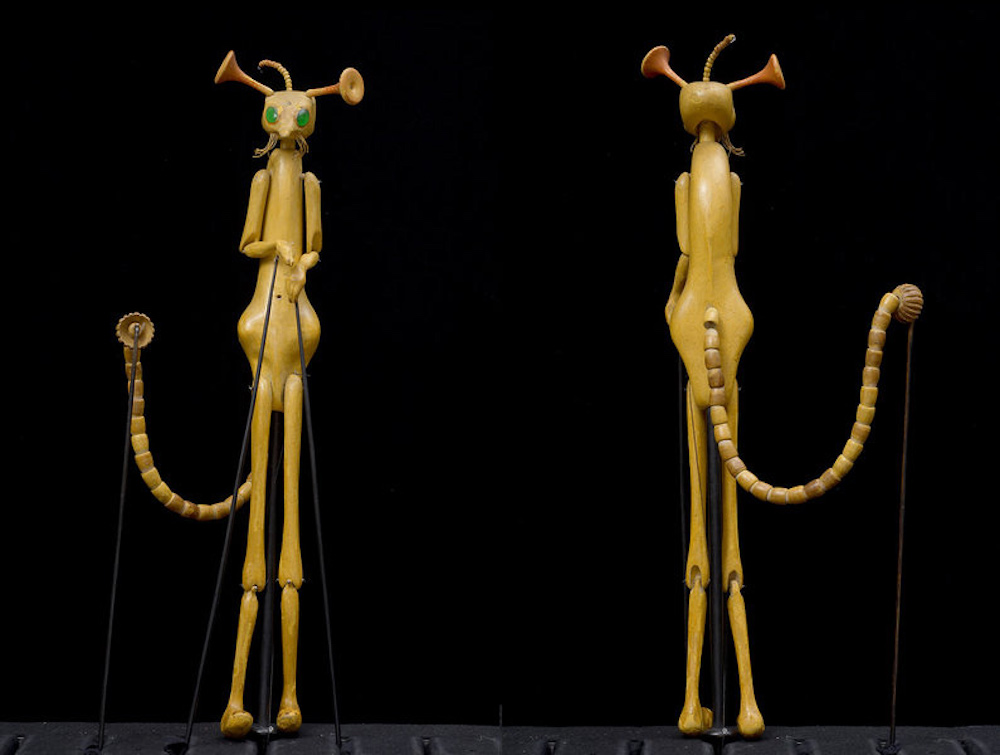
Richard Teschner puppet Der Gelbe aus Nachtstück 1913
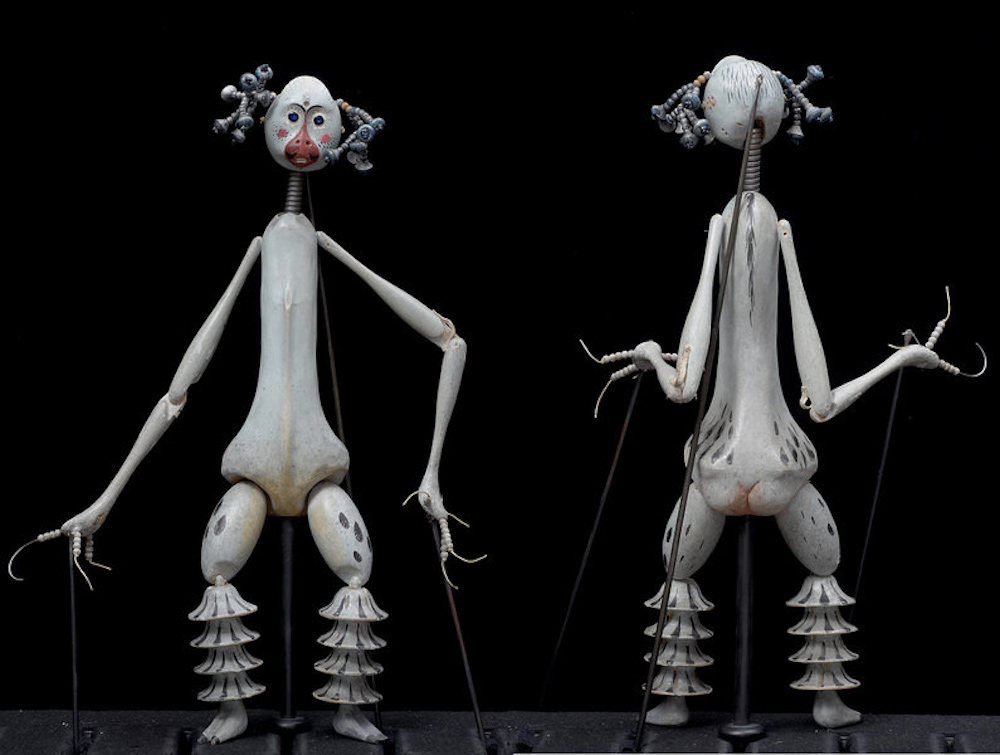
Croissant from “Nachtstuck” 1913
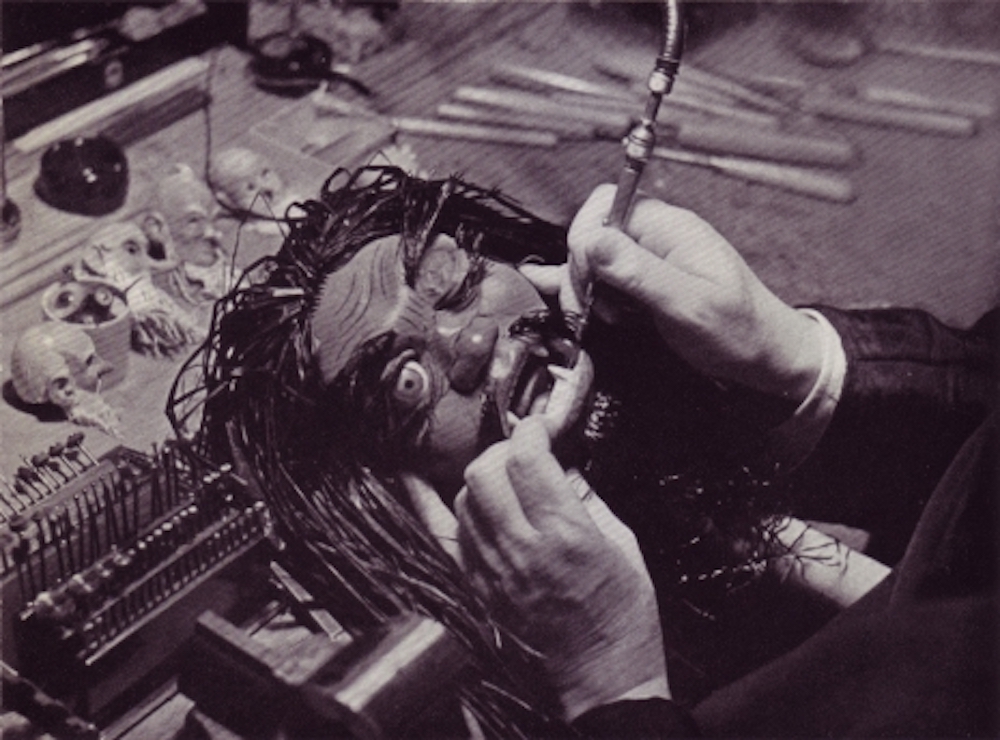
Teschner making a puppet
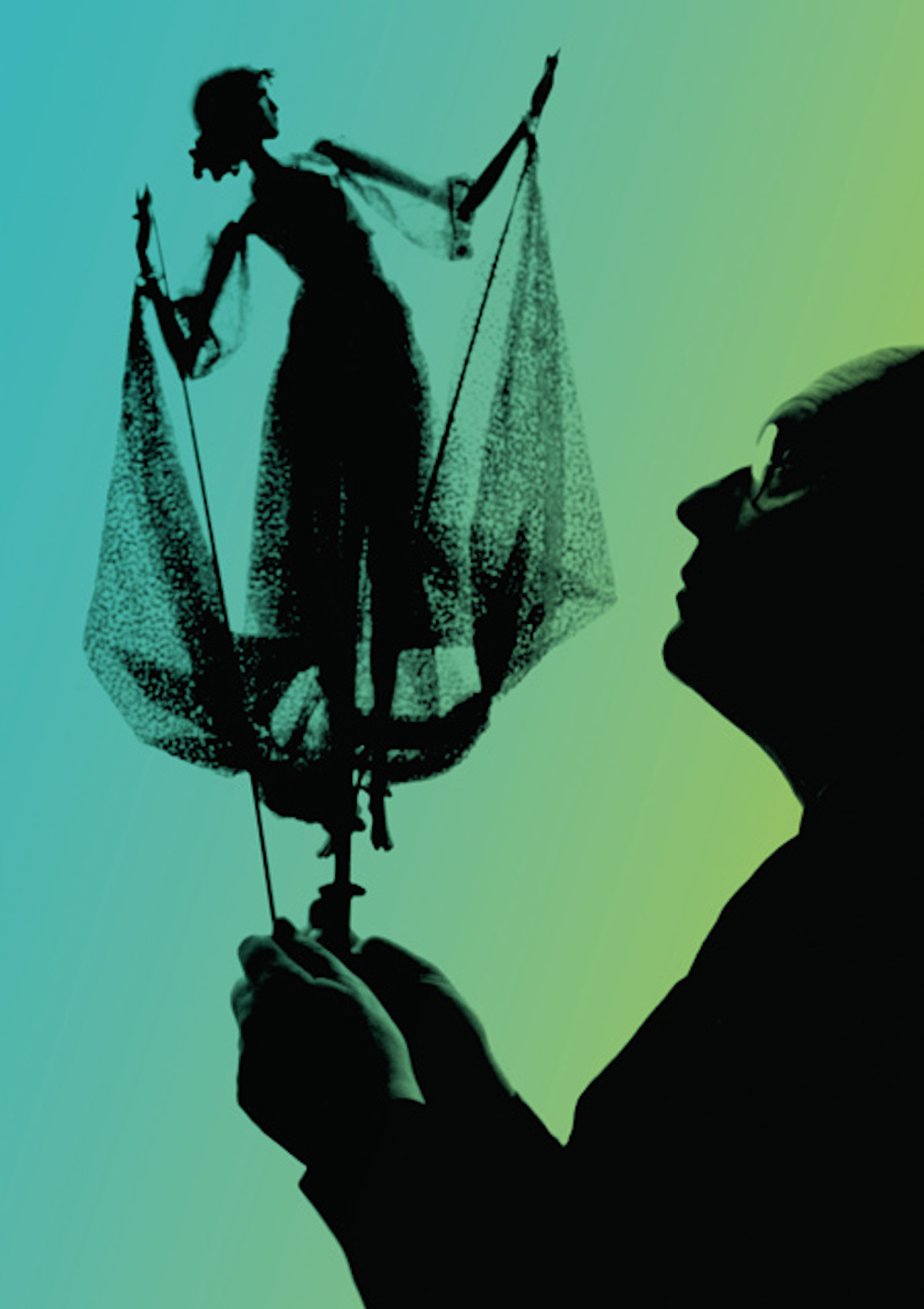
Richard Teschner died in 1948, and his wife, Emma Bacher-Paulik, took up the reins and continued to present puppet shows. In 1953, Richard Teschner’s theatre joined the Theatre Collection of the Austrian National Library – the Theatersammlung der Österreichischen Nationalbibliothek. Since 1991, the Figurenspiegel is housed at the [Österreichisches Theatermuseum] ([Austrian Theatre Museum]) where one can see some of Teschner’s productions, including Der Drachentöter (The Dragon Killer, 1929) and Traum im Karneval (Dream in the Carnival, 1930, also a film).
Via: The Theater Museum, which has a large collection of Teschner’s work, Patriksimon, Monster Brains, 50 Watts, Clive Hicks-Jenkins Artlog.
Would you like to support Flashbak?
Please consider making a donation to our site. We don't want to rely on ads to bring you the best of visual culture. You can also support us by signing up to our Mailing List. And you can also follow us on Facebook, Instagram and Twitter. For great art and culture delivered to your door, visit our shop.



